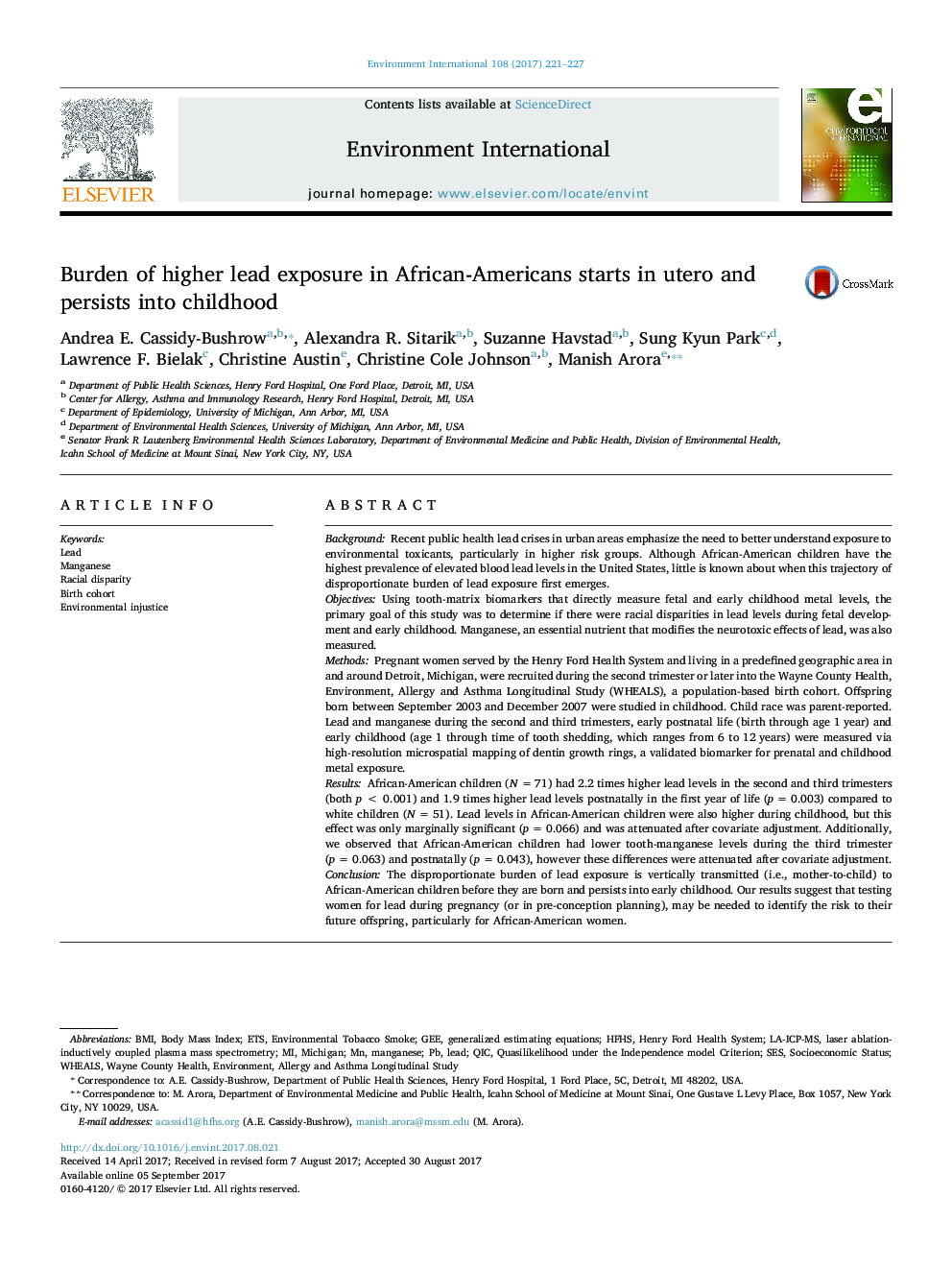| کد مقاله | کد نشریه | سال انتشار | مقاله انگلیسی | نسخه تمام متن |
|---|---|---|---|---|
| 5748210 | 1619022 | 2017 | 7 صفحه PDF | دانلود رایگان |
- This study used shed deciduous teeth to evaluate potential racial differences in lead levels in utero through childhood
- Disproportionate burden of lead levels appears to be vertically transmitted to African-American children before birth
- Racial differences in early-life lead levels persisted even after accounting for area of residence
BackgroundRecent public health lead crises in urban areas emphasize the need to better understand exposure to environmental toxicants, particularly in higher risk groups. Although African-American children have the highest prevalence of elevated blood lead levels in the United States, little is known about when this trajectory of disproportionate burden of lead exposure first emerges.ObjectivesUsing tooth-matrix biomarkers that directly measure fetal and early childhood metal levels, the primary goal of this study was to determine if there were racial disparities in lead levels during fetal development and early childhood. Manganese, an essential nutrient that modifies the neurotoxic effects of lead, was also measured.MethodsPregnant women served by the Henry Ford Health System and living in a predefined geographic area in and around Detroit, Michigan, were recruited during the second trimester or later into the Wayne County Health, Environment, Allergy and Asthma Longitudinal Study (WHEALS), a population-based birth cohort. Offspring born between September 2003 and December 2007 were studied in childhood. Child race was parent-reported. Lead and manganese during the second and third trimesters, early postnatal life (birth through age 1 year) and early childhood (age 1 through time of tooth shedding, which ranges from 6 to 12 years) were measured via high-resolution microspatial mapping of dentin growth rings, a validated biomarker for prenatal and childhood metal exposure.ResultsAfrican-American children (N = 71) had 2.2 times higher lead levels in the second and third trimesters (both p < 0.001) and 1.9 times higher lead levels postnatally in the first year of life (p = 0.003) compared to white children (N = 51). Lead levels in African-American children were also higher during childhood, but this effect was only marginally significant (p = 0.066) and was attenuated after covariate adjustment. Additionally, we observed that African-American children had lower toothâmanganese levels during the third trimester (p = 0.063) and postnatally (p = 0.043), however these differences were attenuated after covariate adjustment.ConclusionThe disproportionate burden of lead exposure is vertically transmitted (i.e., mother-to-child) to African-American children before they are born and persists into early childhood. Our results suggest that testing women for lead during pregnancy (or in pre-conception planning), may be needed to identify the risk to their future offspring, particularly for African-American women.
Journal: Environment International - Volume 108, November 2017, Pages 221-227
